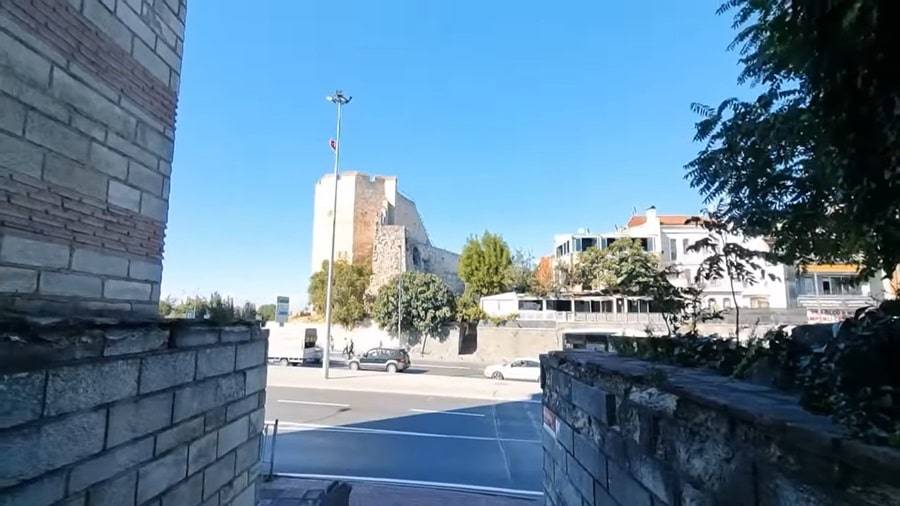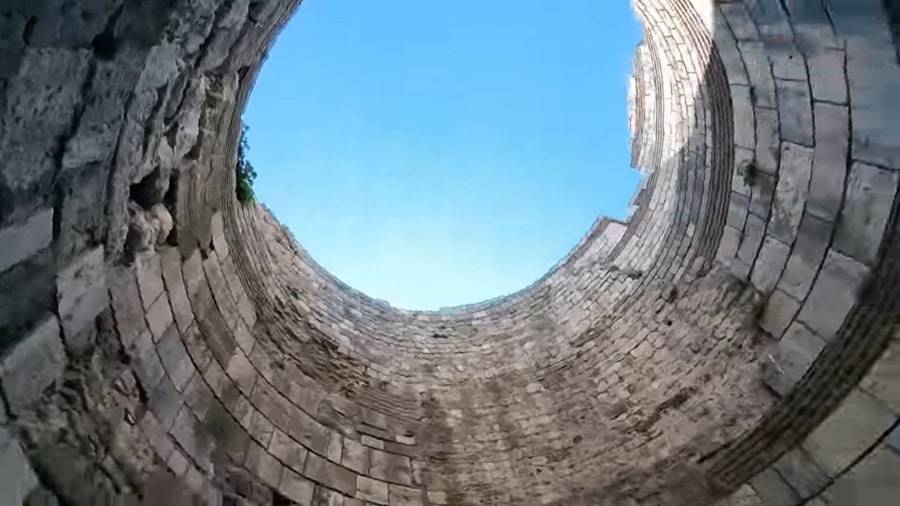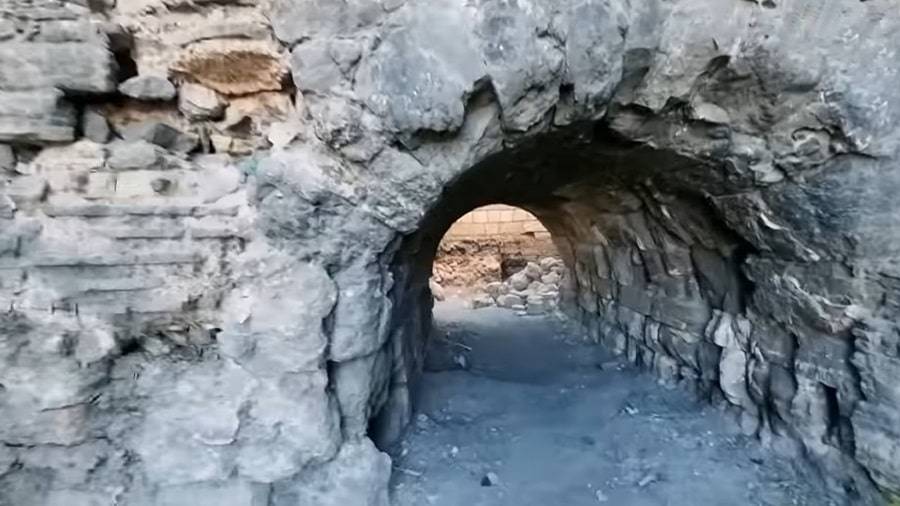Standing guard over Istanbul for centuries, the Istanbul City Walls are a captivating testament to the city’s rich history. Encompassing a vast network of fortifications, these walls played a pivotal role in defending the city against invaders, shaping the course of empires and defining Istanbul’s unique character. Exploring these magnificent ramparts is a journey through time, offering a glimpse into the engineering marvels and resilience of the Byzantine and Ottoman eras.
History of the City Walls
The story of the Istanbul City Walls stretches back millennia. The earliest fortifications date back to the 7th century BCE, when the city was founded as Byzantium. However, the most significant additions came much later, during the Roman and Byzantine periods.
The Theodosian Walls: Constructed in the 5th century AD by Emperor Theodosius II, these formidable double walls are considered the most impressive section of the Istanbul City Walls. They withstood numerous sieges, including attacks by the Persians, Arabs, and Avars, securing the city’s prosperity and allowing the Byzantine Empire to flourish.
The Golden Horn Walls: These walls guarded the city along the Golden Horn, a natural harbor that served as a vital trade route. Built in the early Byzantine era, they provided an additional layer of defense against naval attacks.
The Sea Walls (Walls of Constantinople): Facing the Marmara Sea, these walls were the first line of defense against seaborne invasions. Constructed over centuries, they were further strengthened by the Ottomans after their conquest of Constantinople in 1453.
Location and Access

The Istanbul City Walls stretch for over 20 kilometers, encompassing various districts of Istanbul. Several sections are easily accessible by public transportation, taxi, or foot. While some parts of the walls are under restoration and not open to the public, many sections offer free access, allowing visitors to wander along the ramparts and marvel at the historic structures.
Theodosian Walls: These walls are scattered across several locations, with some of the most accessible sections being near the Eğrikapı neighborhood and the Belgrade Forest.
Golden Horn Walls: The walls along the Golden Horn are best viewed from a boat tour or while strolling along the waterfront promenade in the Eminönü and Karaköy districts.
Sea Walls: Remnants of the Sea Walls can be seen along the coast of the Marmara Sea in the Sultanahmet and Sirkeci districts.
Opening hours and admission fees vary depending on the specific section you visit. It’s always a good idea to check with local resources or the website of the Istanbul Metropolitan Municipality for the latest information. Elevate your experience of Istanbul City Walls with our top-rated tour offering.
Architecture and Design

The Istanbul City Walls are a marvel of Byzantine and Ottoman military engineering. Constructed primarily of stone and brick, they feature a complex system of walls, towers, gates, and moats.
Walls: The thickness of the walls varies depending on the location, with some sections reaching up to 12 meters thick. These formidable barriers were designed to withstand powerful siege weapons.
Towers: Hundreds of towers punctuate the walls, providing observation points and firing positions for defenders. The architectural styles of the towers vary, reflecting the different periods of construction.
Gates: Fortified gates served as controlled entry points into the city. Some of the most notable gates include the Golden Gate, the Eğrikapı Gate, and the Belgrade Gate.
Main Sections of the City Walls

The Istanbul City Walls can be broadly divided into three main sections:
The Theodosian Walls
These land walls were the heart of the city’s defense system for centuries. Their successful resistance against numerous sieges is a testament to their engineering brilliance and strategic importance. The powerful double walls, interspersed with towers and monumental gates, create a truly imposing sight. The Yedikule Fortress, located at the southwestern end of the Theodosian Walls, served as a prison and armory during the Ottoman era.
The Golden Horn Walls
Following the curve of the Golden Horn, these walls were crucial in protecting the harbor and its commercial activity. Today, they offer a picturesque backdrop to the bustling waterfront scene. The Golden Horn Walls played a vital role in safeguarding the city’s economic prosperity throughout Byzantine and Ottoman times.
Notable Features: While some parts of the walls are no longer visible, remaining sections can be appreciated from various vantage points along the Golden Horn. The walls incorporate several gates, including the Balat Gate and the Eğrikapı Gate.
The Sea Walls (Walls of Constantinople)
Overview: Facing the vast expanse of the Marmara Sea, these walls were the first line of defense against naval attacks. Their construction and maintenance spanned centuries, reflecting the ever-evolving threats faced by the city.
History and Significance: The Sea Walls were instrumental in repelling attacks from seafaring empires like the Arabs and the Crusaders. After the Ottoman conquest, the walls were further strengthened to withstand advancements in naval warfare.
Notable Features: While some sections are heavily restored or in ruins, remnants of the Sea Walls can still be seen along the coastline. The Walls incorporate several historic harbors, including the famous Süleymaniye Mosque harbor.
Importance of Preserving Historical Landmarks
The Istanbul City Walls stand as silent sentinels, whispering tales of empires, battles, and the unwavering spirit of a city. Preserving these historical landmarks is vital for several reasons:
Tangible Link to the Past: The City Walls provide a physical connection to Istanbul’s rich past. By safeguarding them, we ensure future generations can experience a tangible piece of history.
Understanding Military Engineering: These fortifications offer valuable insights into the evolution of military tactics and defensive strategies throughout history.
Enhancing Cultural Heritage: The City Walls are an integral part of Istanbul’s cultural identity. Their preservation strengthens the city’s unique character and attracts visitors from around the world.
Visitor Information
Planning a visit to the Istanbul City Walls
- Tips for Exploring: Since the walls stretch across a vast area, choose specific sections based on your interests. Wear comfortable shoes for walking on uneven terrain and bring water, especially during hot weather. Consider exploring the walls alongside a local guide to gain deeper historical insights.
- Best Sections for Panoramic Views: For breathtaking vistas, head to the Belgrade Forest or the Pierre Loti Hill near the Eğrikapı section of the Theodosian Walls. TheEminönü waterfront offers panoramic views of the Golden Horn Walls.
- Nearby Attractions: Combine your visit to the City Walls with other historical landmarks. The Belgrade Forest boasts hiking trails and historical sites, while the Eminönü and Karaköy districts offer vibrant markets, mosques, and museums.
Exploring the Istanbul City Walls is a journey through time. From the formidable Theodosian Walls to the remnants of the Sea Walls, these fortifications stand as testaments to resilience, innovation, and the enduring spirit of a great city. So, lace up your walking shoes, pack your curiosity, and embark on a captivating exploration of Istanbul’s historic guardians.

